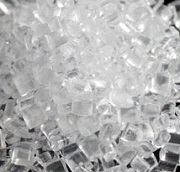Styrene acrylonitrile (SAN) resins are thermoplastic copolymers of styrene and acrylonitrile, which find application in household and sanitary products, domestic electrical items, battery casings, pharma/cosmetic packaging, automotive industry, medicine and other applications.
Though not as popular as polystyrene and acrylonitrile-butadiene-styrene (ABS), styrene acrylonitrile is nevertheless peculiar for its rigidity, toughness, transparency, thermal and chemical (incl. oil) resistance, as well as cost-effectiveness, especially after compounding SAN with other materials into copolymer blends (e.g. polyamide‐6 or PA‐6). Of course, SAN may be considered as part of the ABS family of thermoplastic copolymers, with SAN prices coupled with ABS prices.
The market for styrene acrylonitrile operates in a highly competitive environment, largely dependent of feedstock prices and behaviour of consuming sectors. Other factors, like force majeure circumstances, capacity addition and reduction, regulation, environmental concerns, and technological developments, are of large significance. For instance, the current coronavirus outbreak affected the Chinese SAN production by reducing operating rates and delaying turnaround maintenances at some local manufacturers. The decrease in acrylonitrile prices in China in February 2020 reverberated downstream sending SAN prices down.
The European SAN market in February 2020 was characterised by mixed sentiment, mainly due to the volatile behaviour of SAN feedstock and consuming markets. With respect to styrene, the market witnessed rising contract prices and diminishing spot prices. Acrylonitrile prices in Europe demonstrated an upward trend throughout 2019 and early 2020. The SAN market was affected by these feedstock cost movements. Significant influence was rendered by a decision made by Ineos (or Ineos Nitriles) to shut down its 280,000 mty acrylonitrile facility in Seal Sands (UK) in 2020. This will eliminate about a quarter of the current West European acrylonitrile production capacity of over 1 mln mty. Ineos will address this loss largely from its 545,000 mty acrylonitrile facility in Green Lake (TX, USA) and 320,000 mty acrylonitrile facility in Köln (Germany). However, weaker demand in the consuming sectors, especially in the automotive sector, offset these developments.
More information on the global styrene acrylonitrile market can be found in the comprehensive research report “Styrene Acrylonitrile (SAN) 2020 World Market Outlook and Forecast to 2029”.
